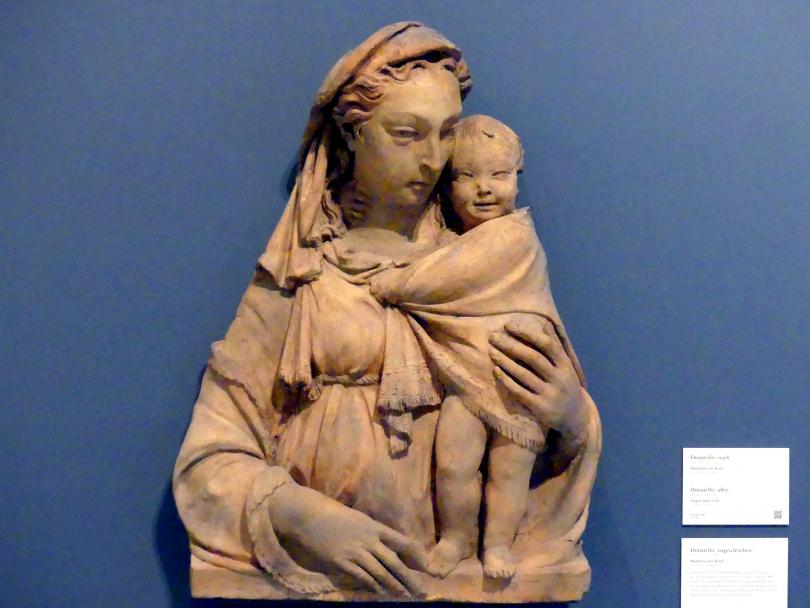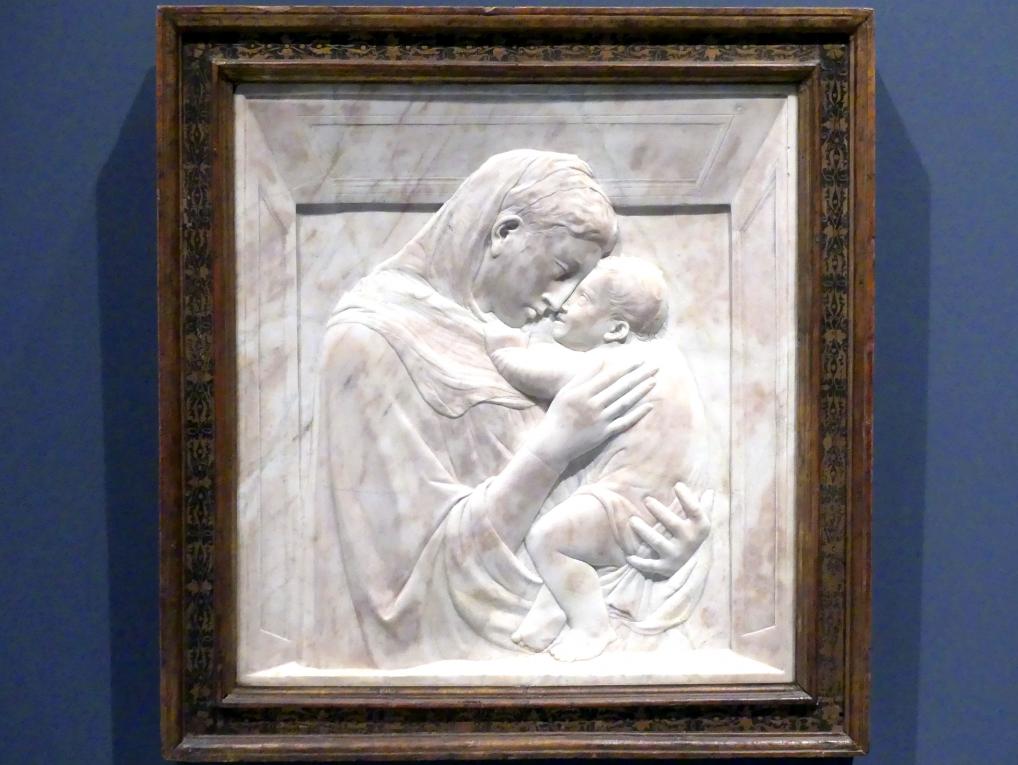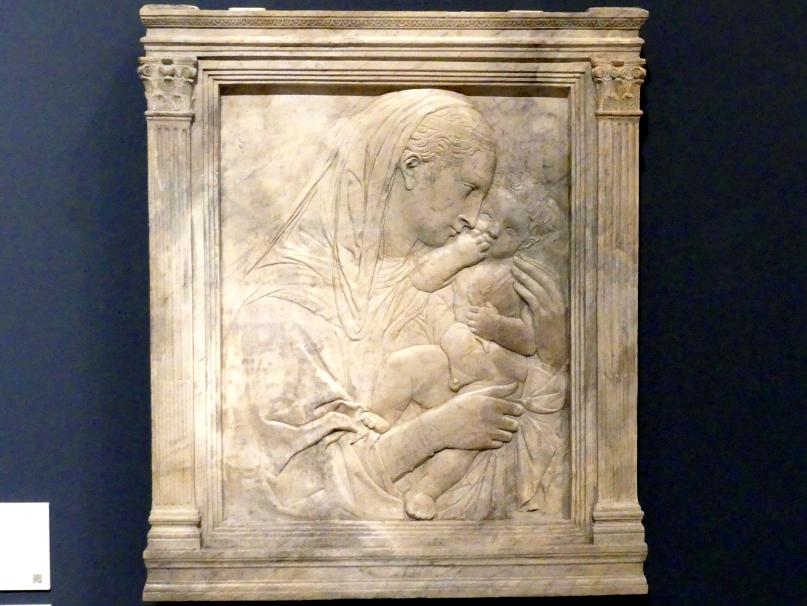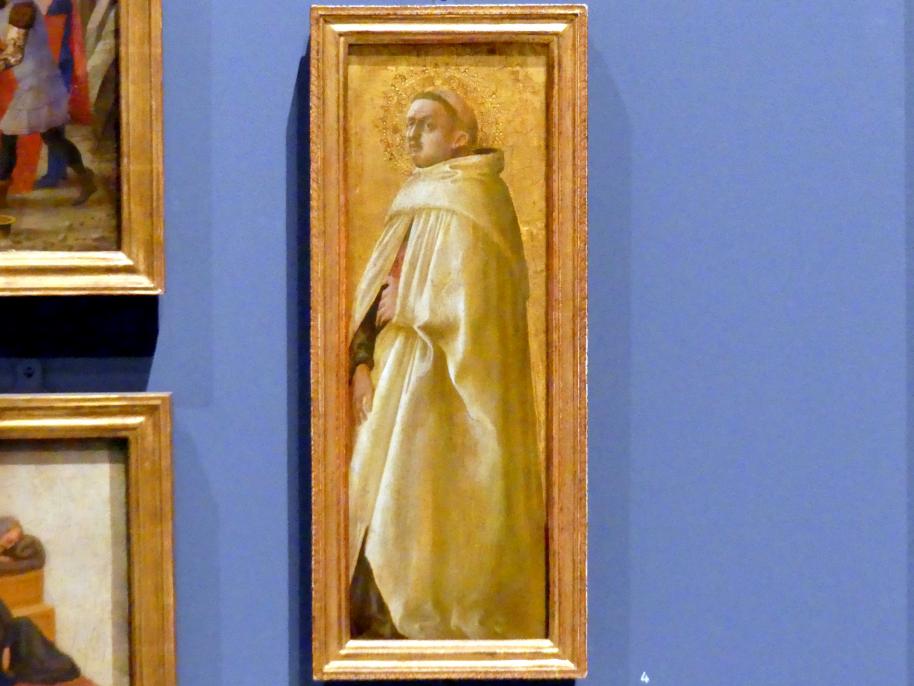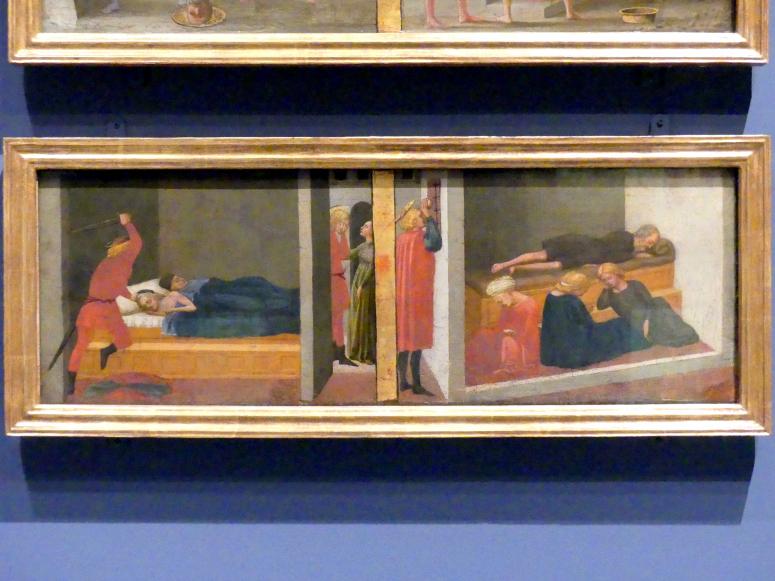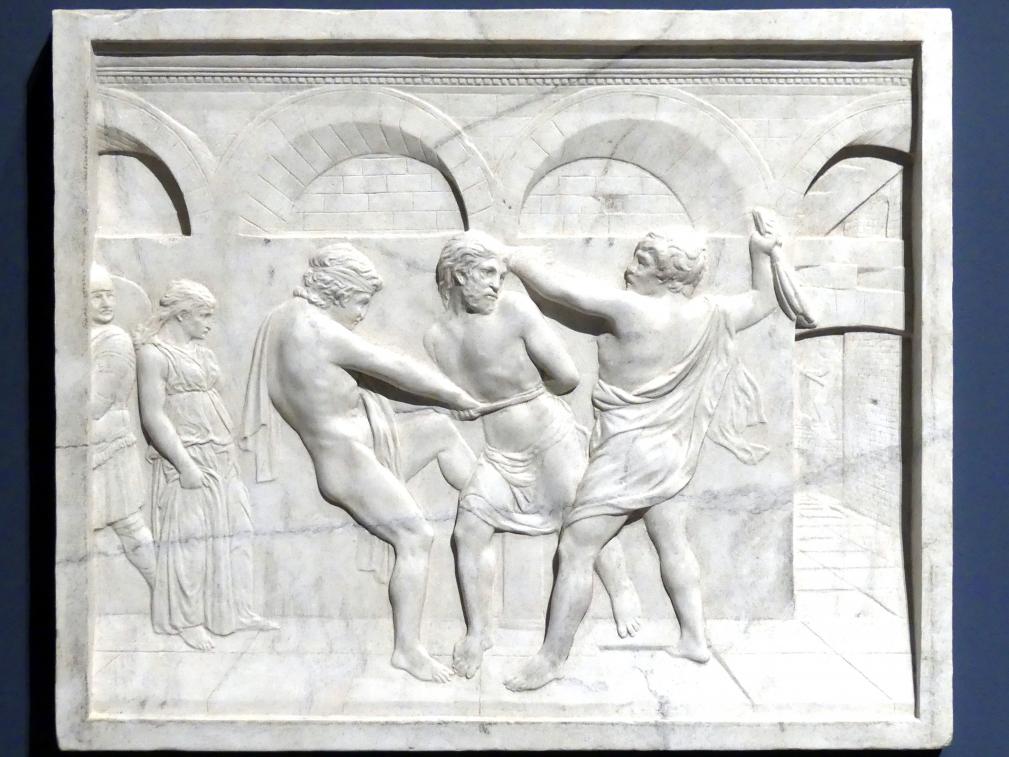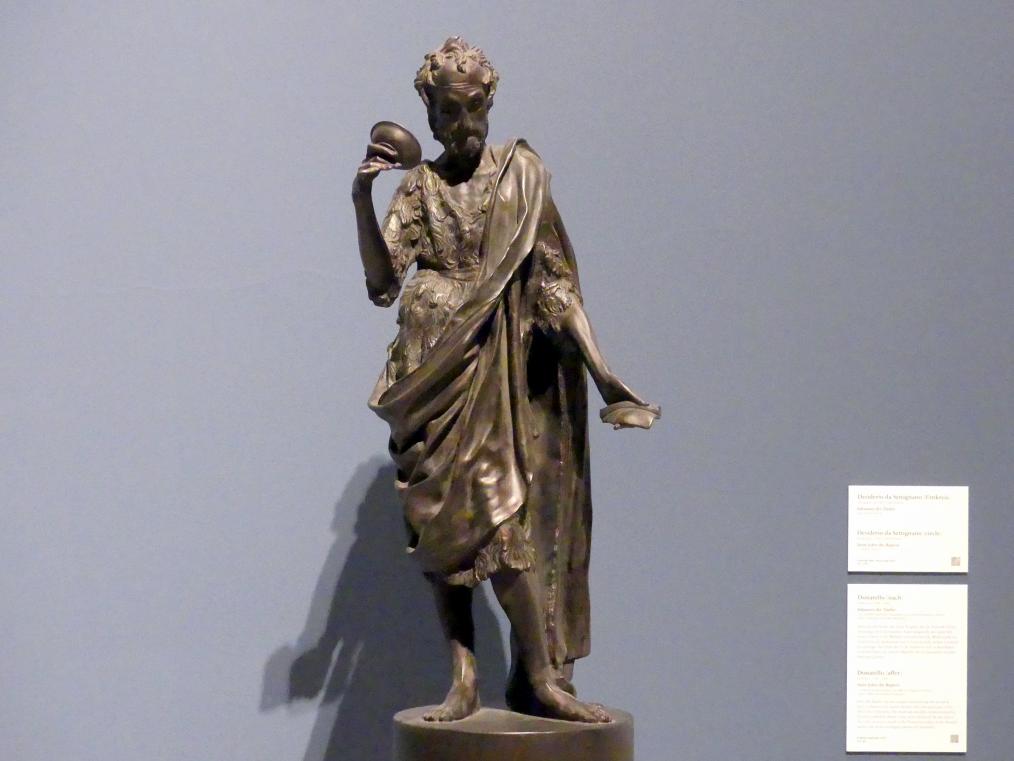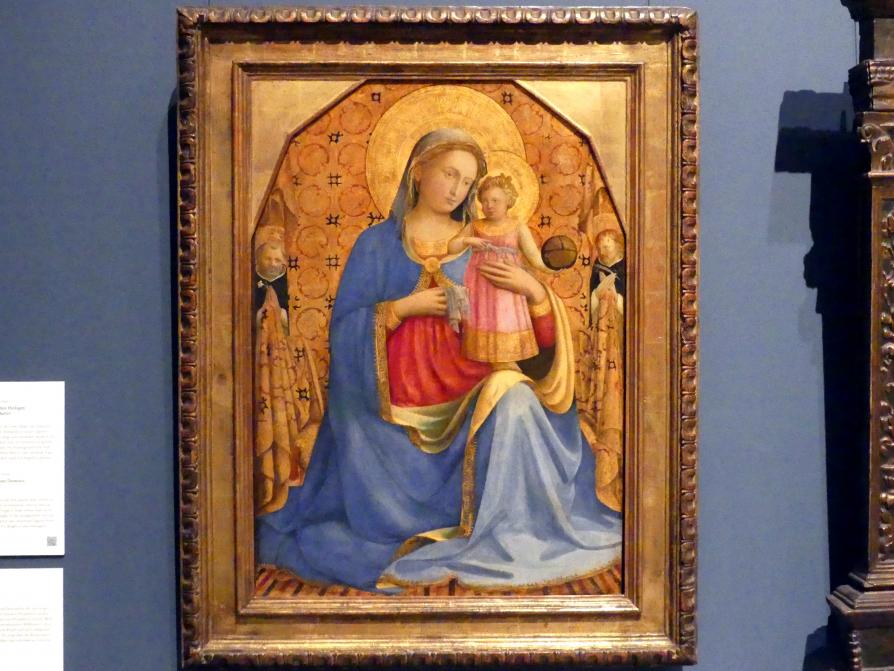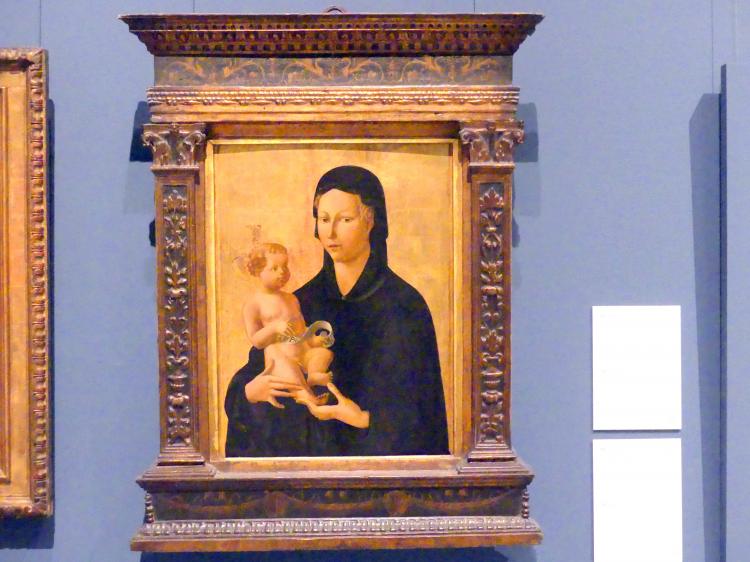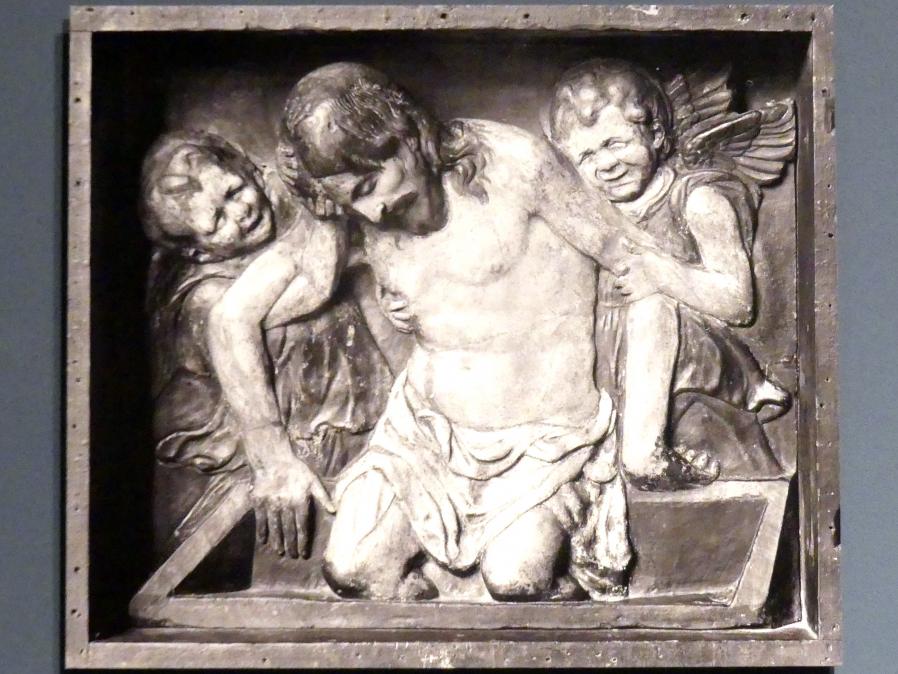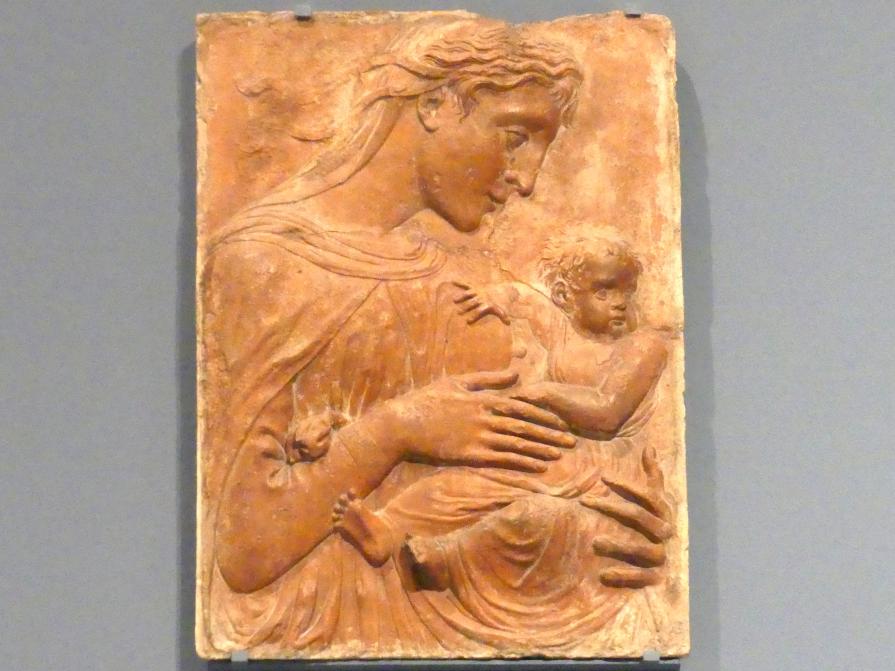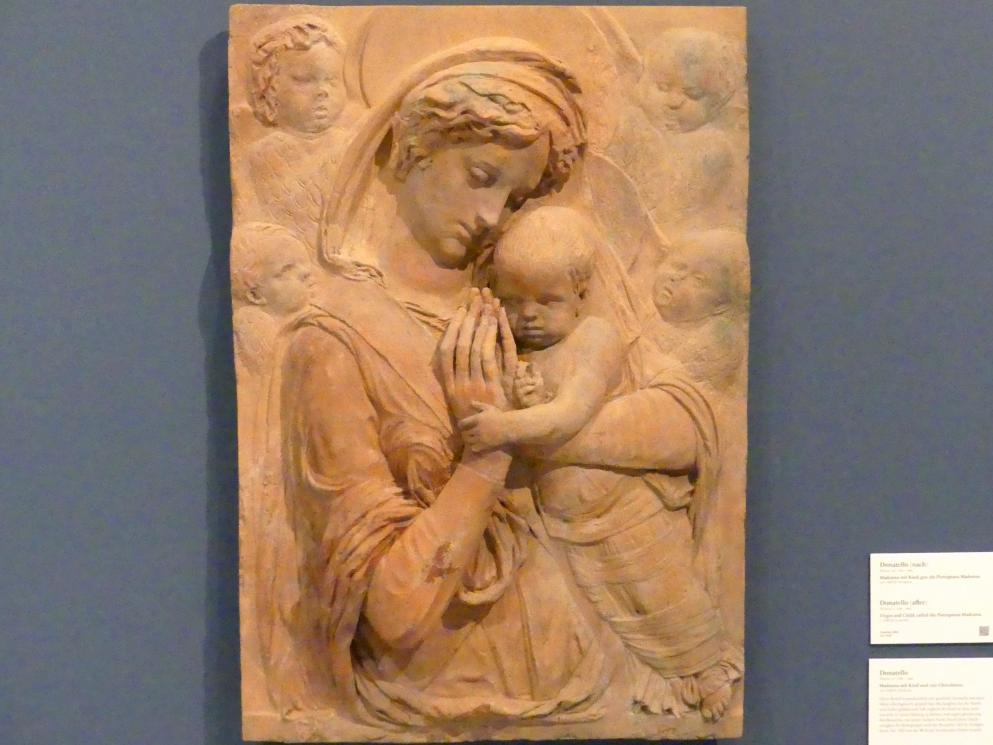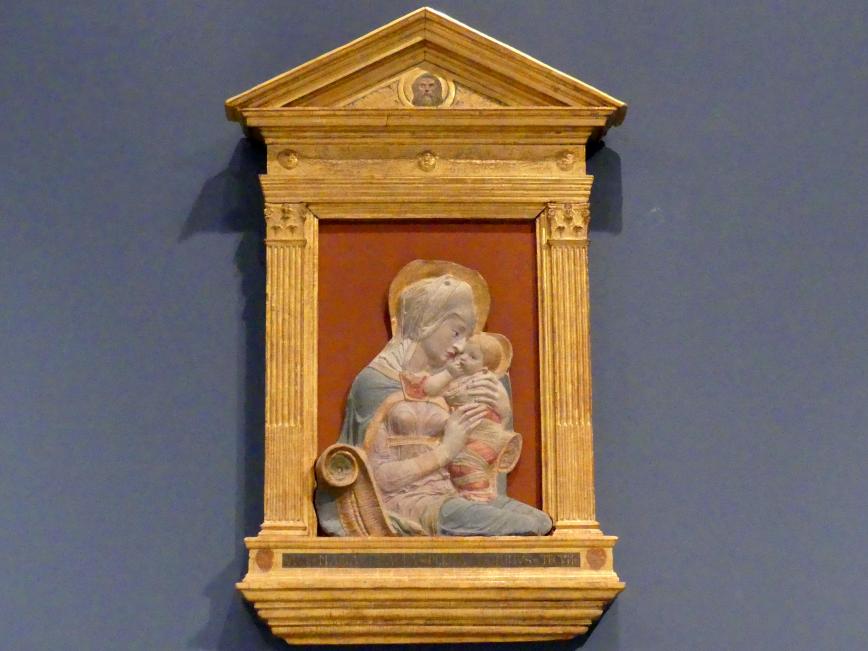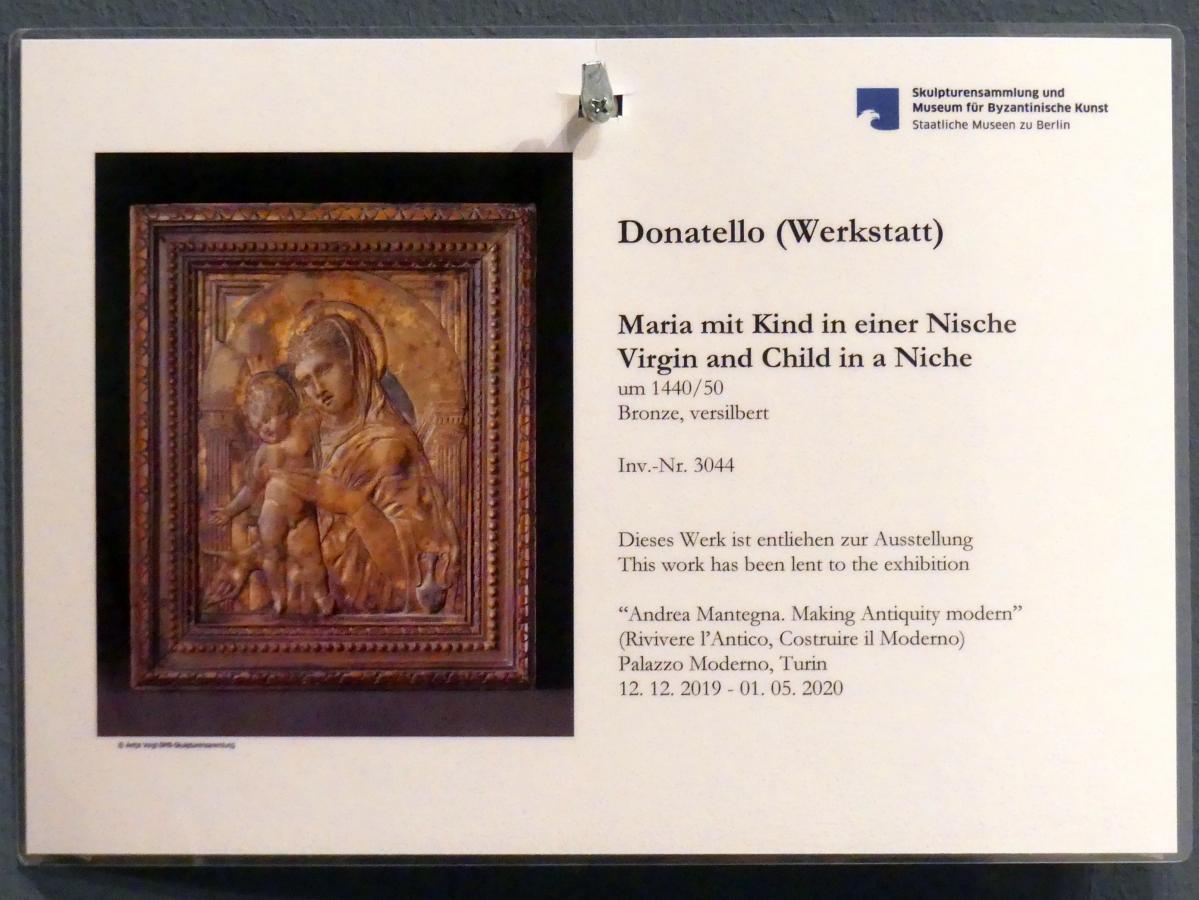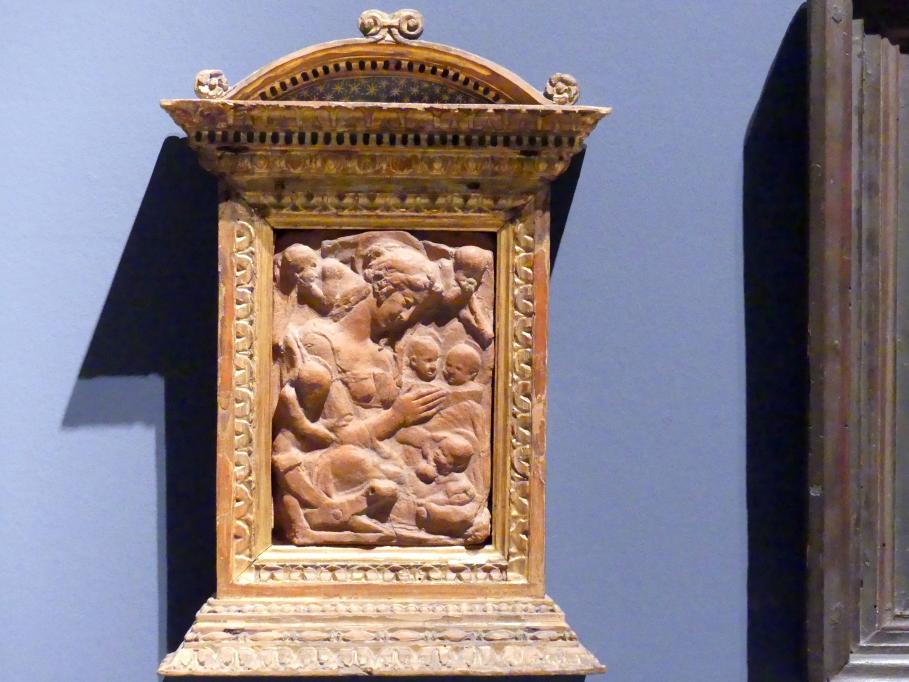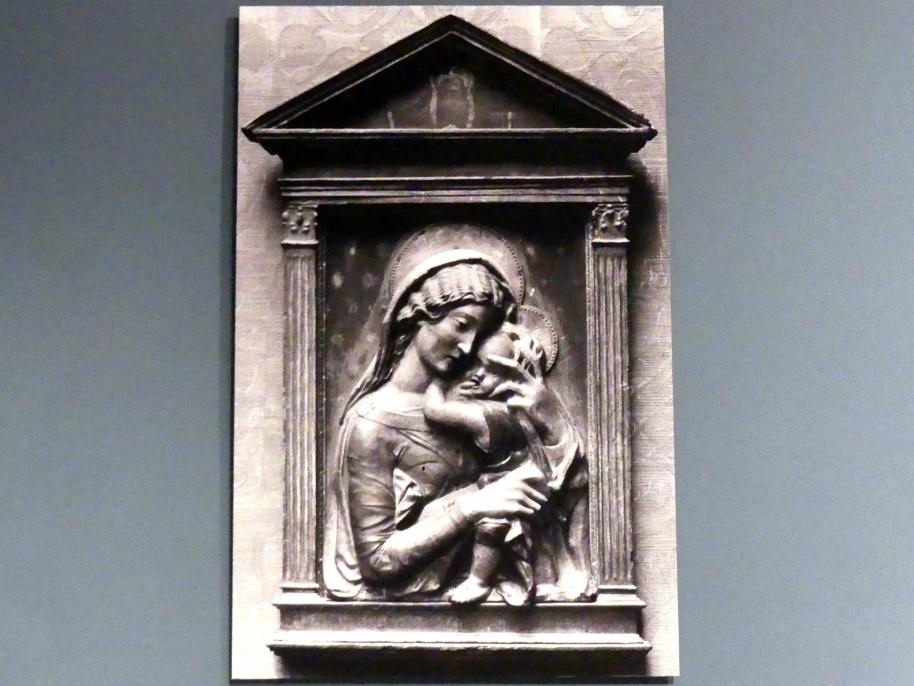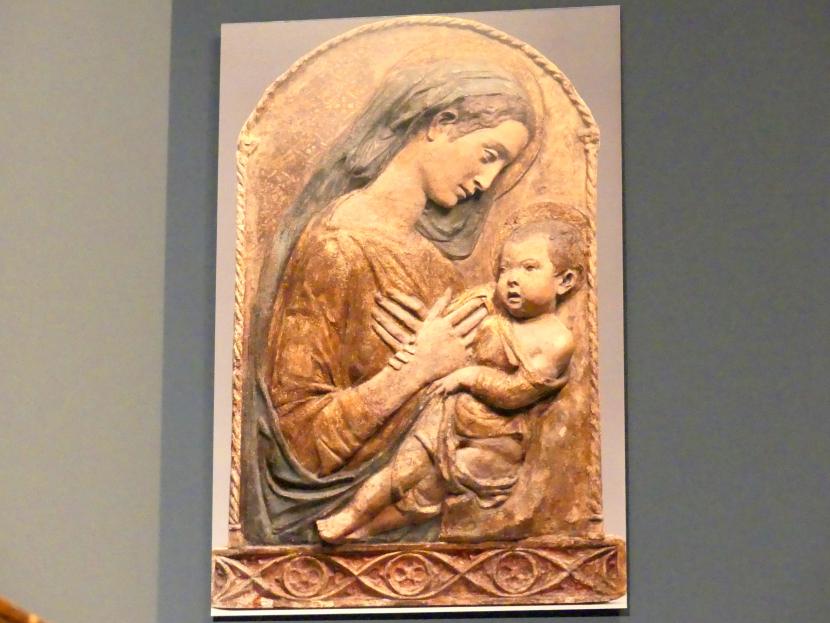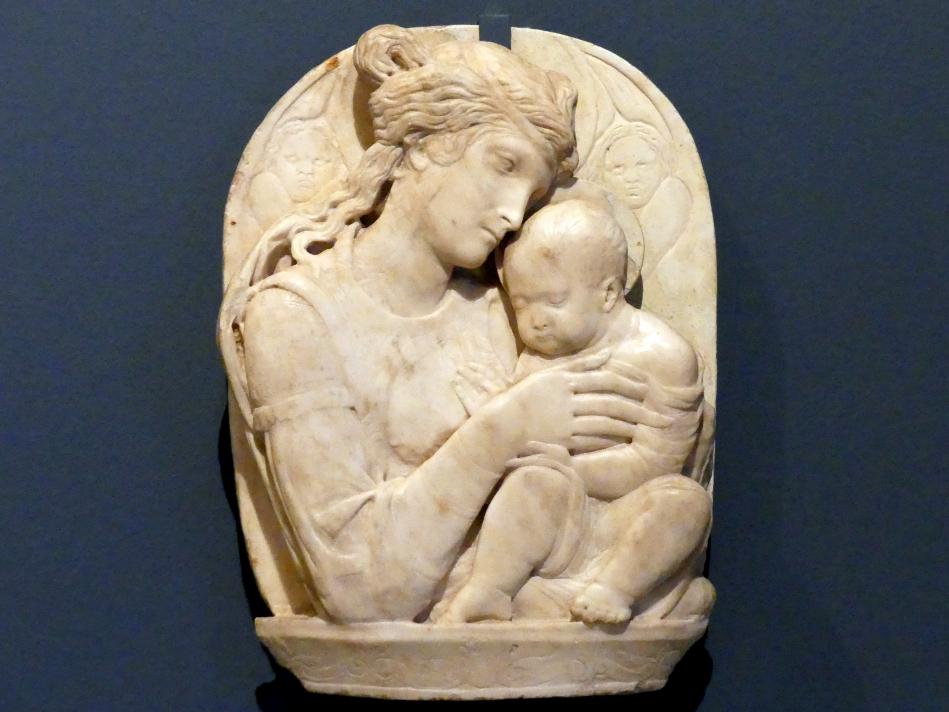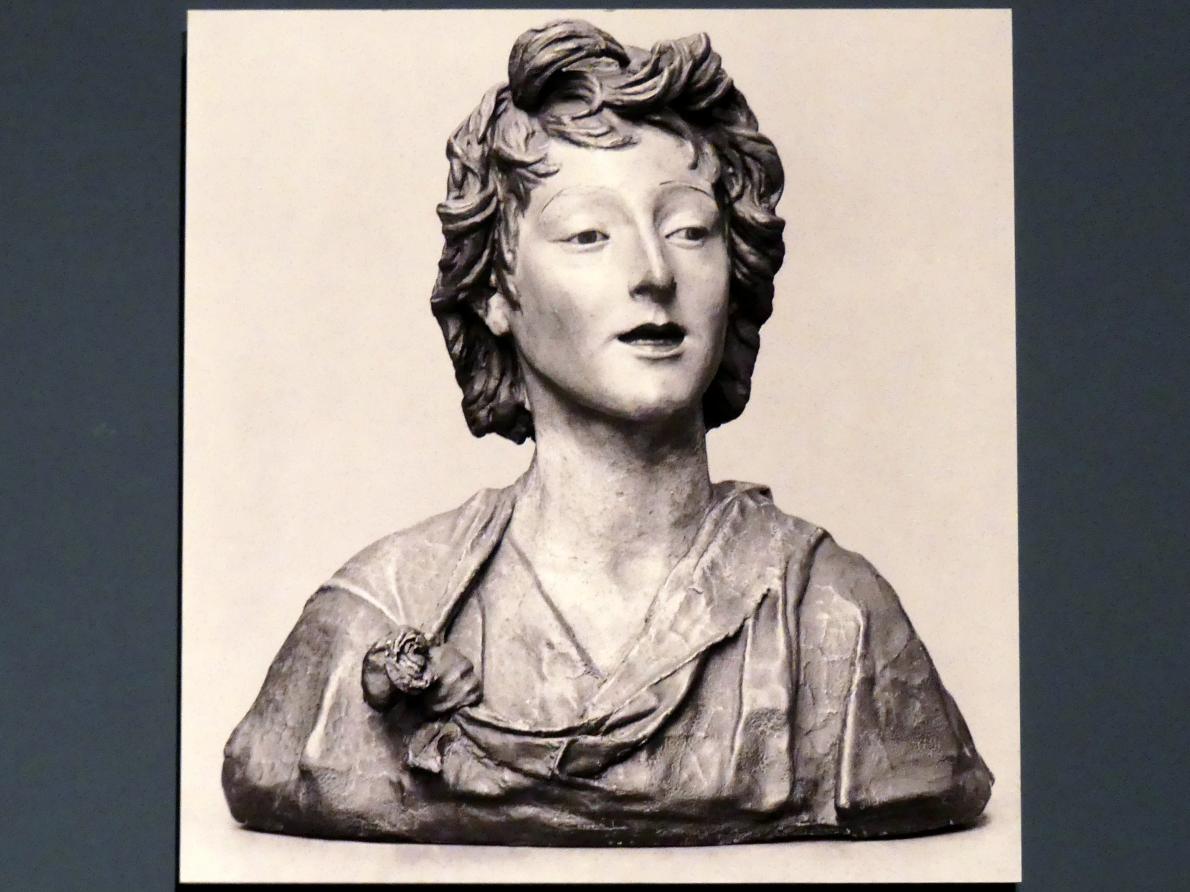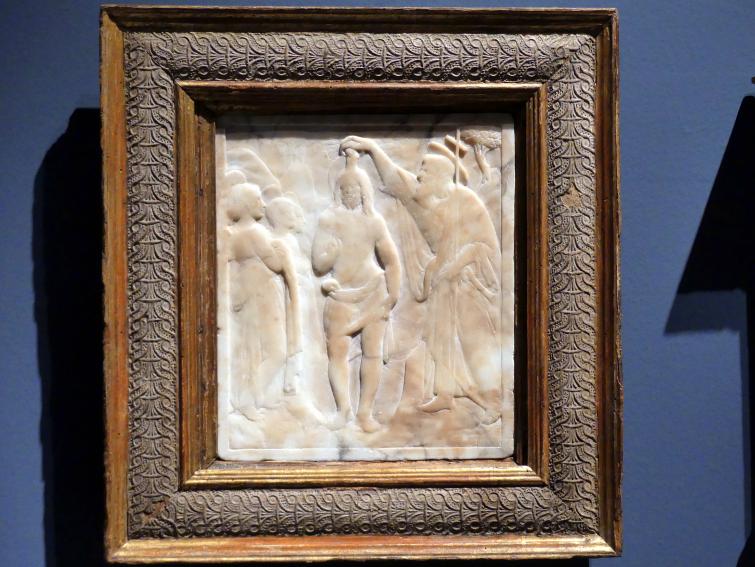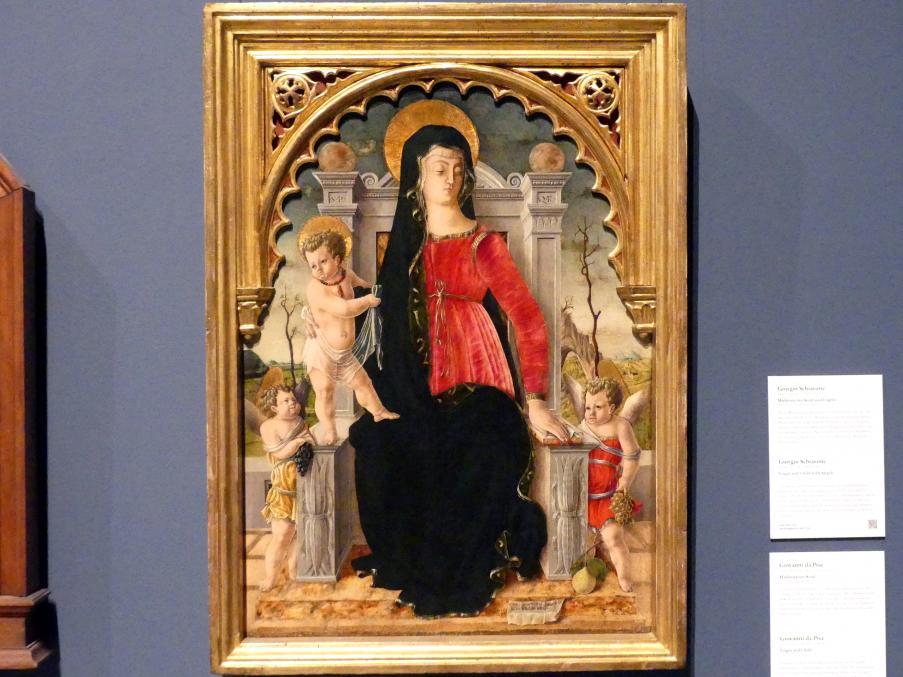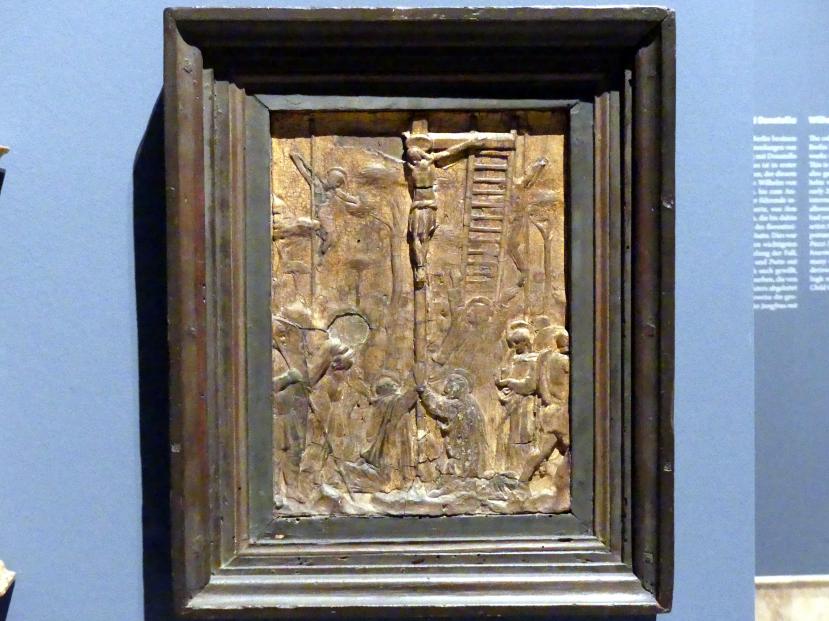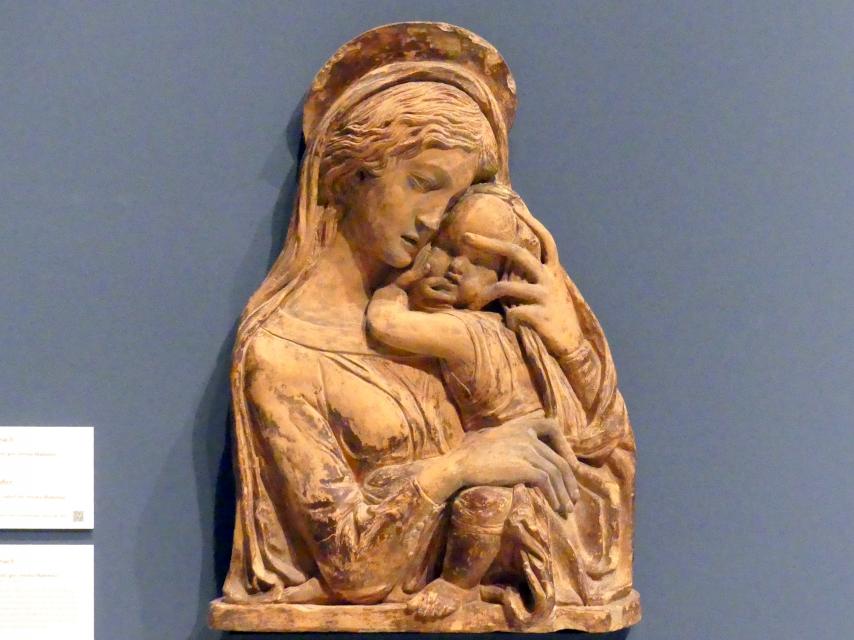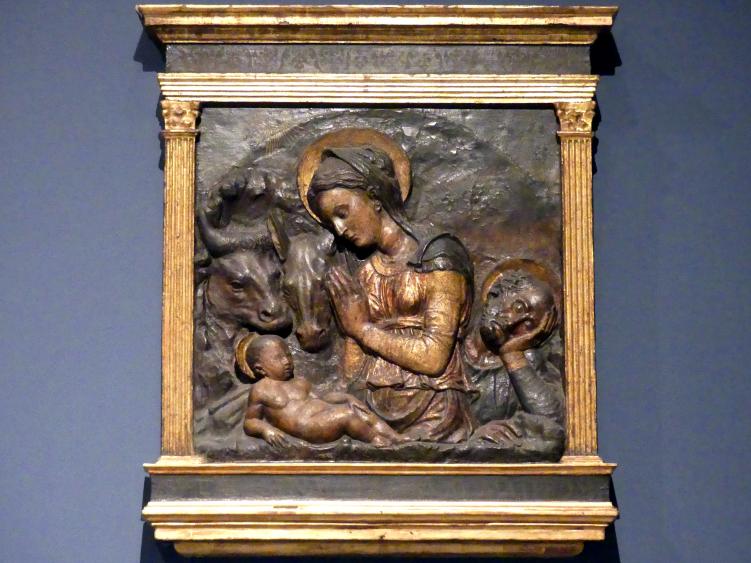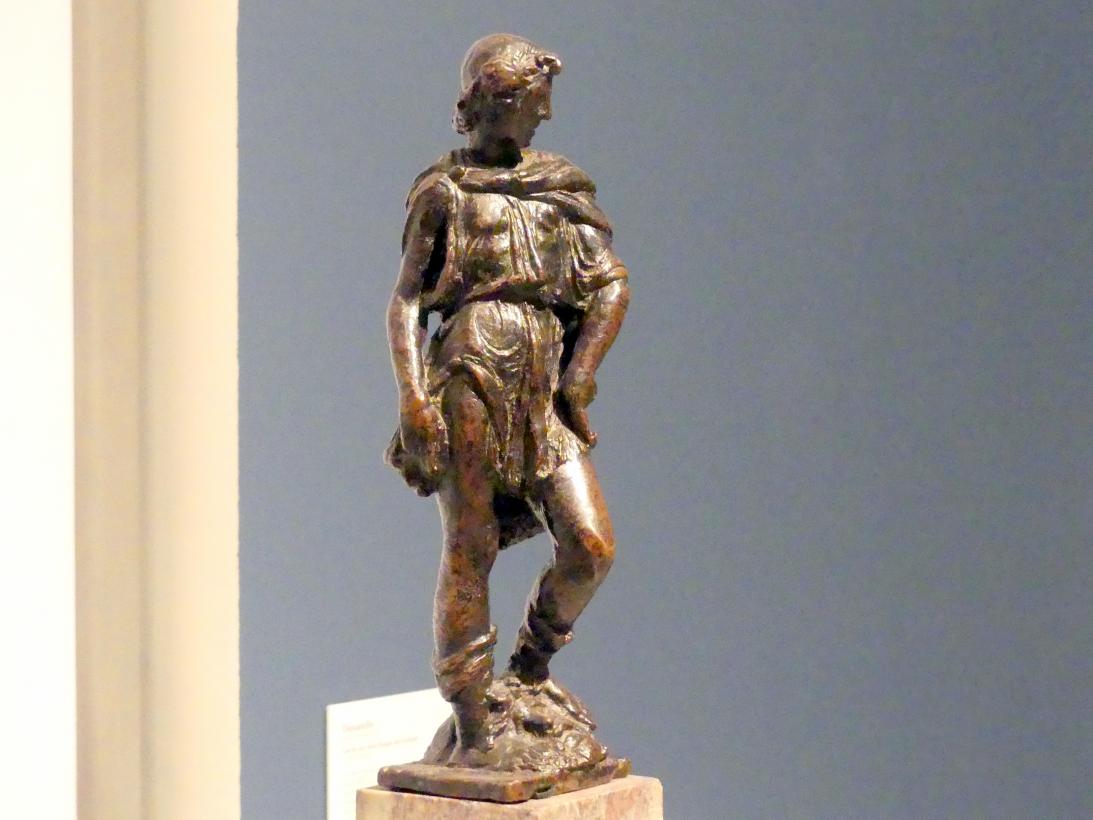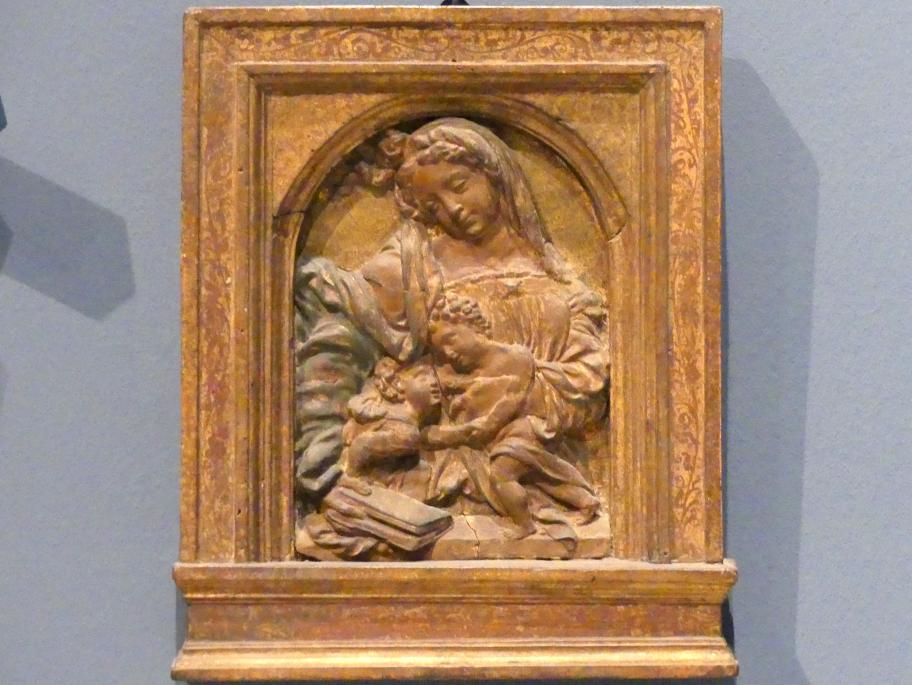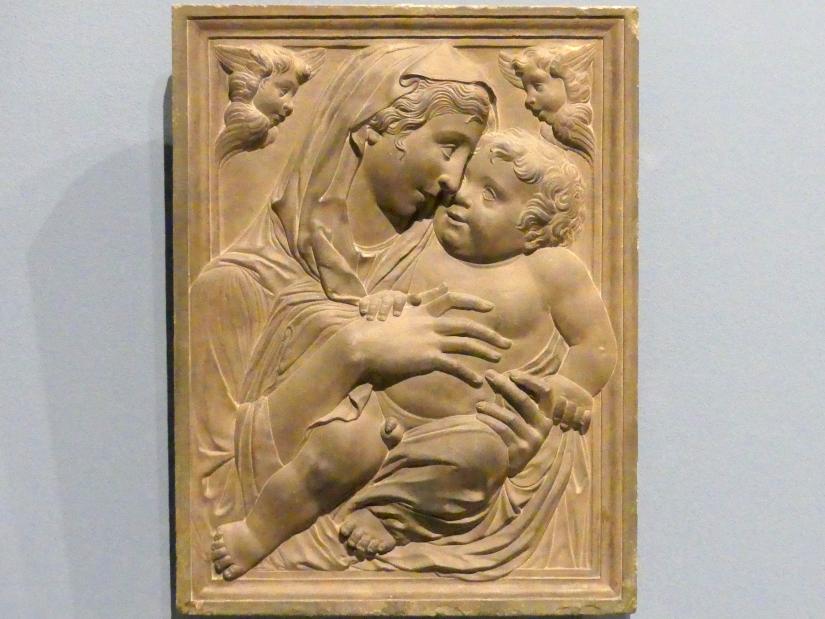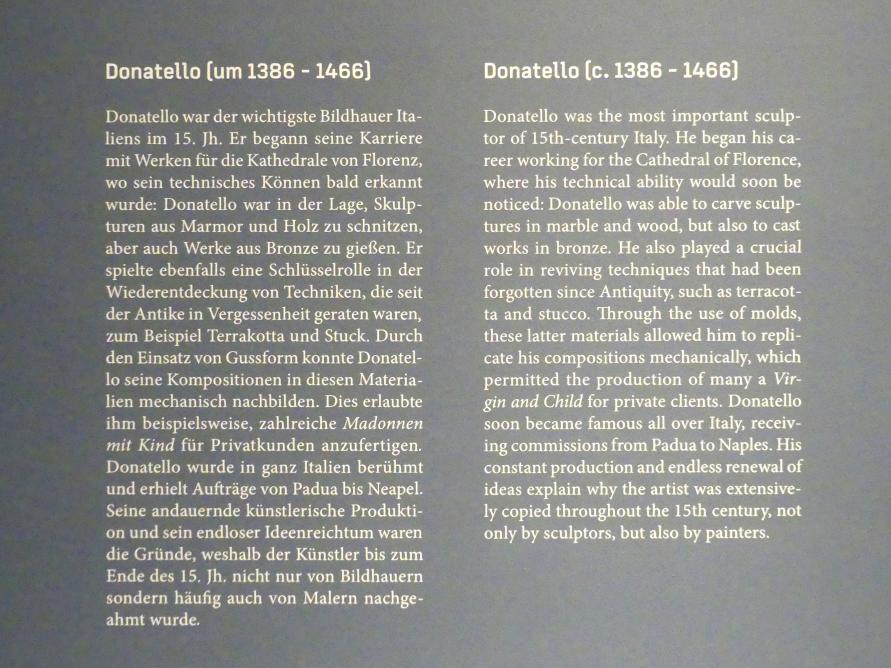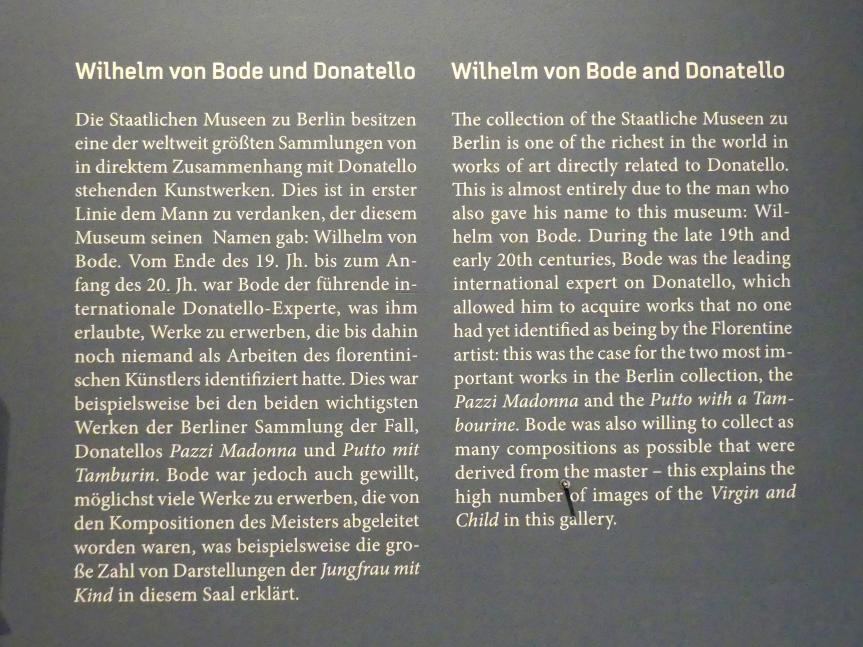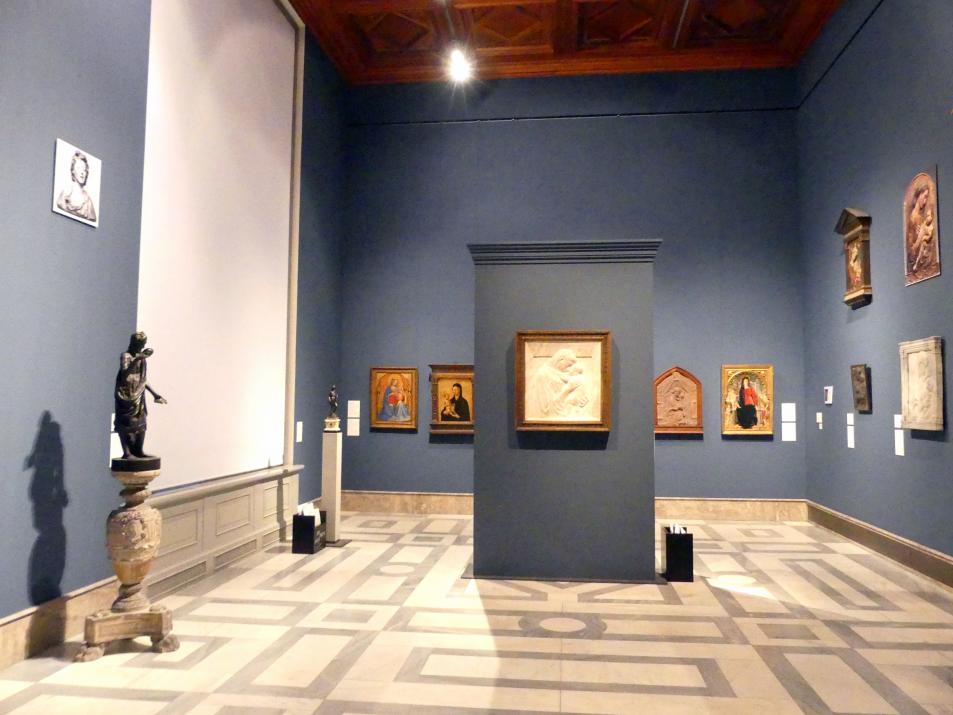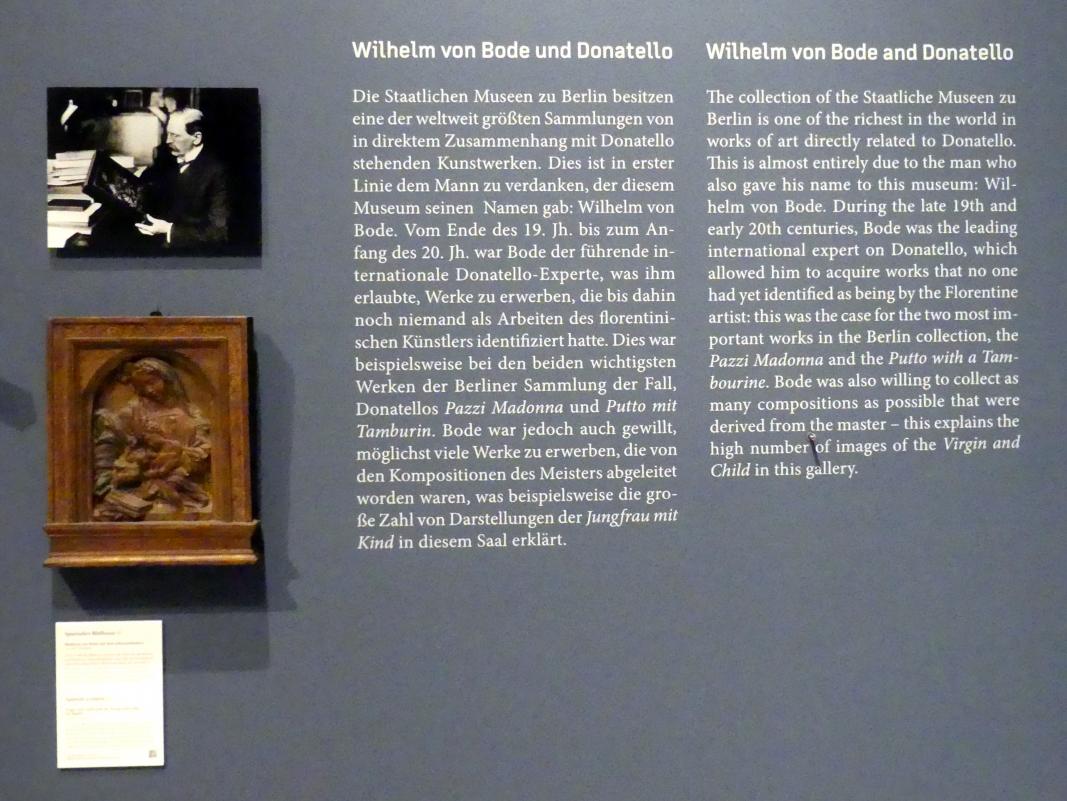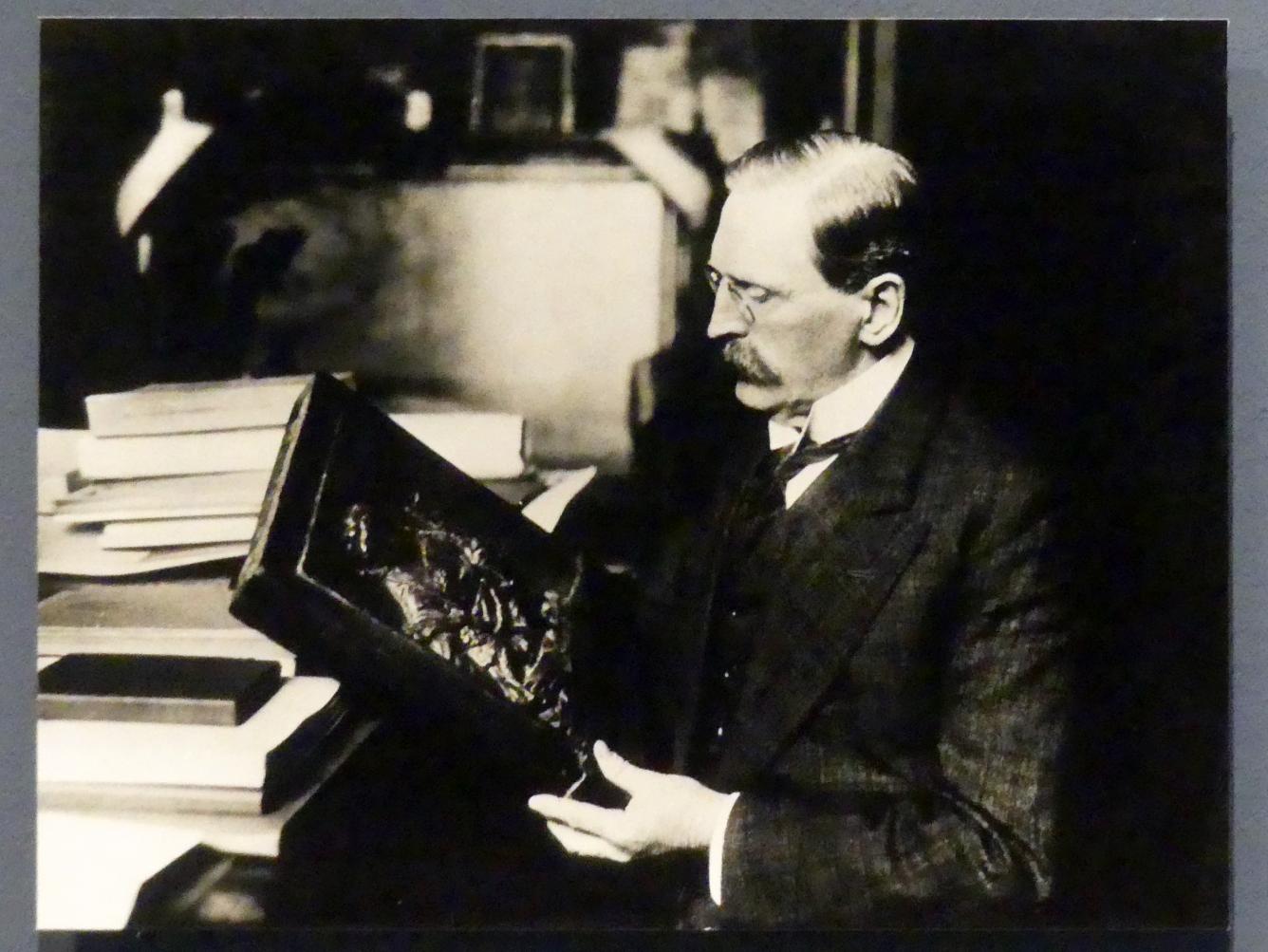Donatello (um 1386 - 1466) Donatello war der wichtigste Bildhauer Italiens im 15. Jh. Er begann seine Karriere mit Werken für die Kathedrale von Florenz, wo sein technisches Können bald erkannt wurde: Donatello war in der Lage, Skulpturen aus Marmor und Holz zu schnitzen, aber auch Werke aus Bronze zu gießen. Er spielte ebenfalls eine Schlüsselrolle in der Wiederentdeckung von Techniken, die seit der Antike in Vergessenheit geraten waren, zum Beispiel Terrakotta und Stuck. Durch den Einsatz von Gussform konnte Donatello seine Kompositionen in diesen Materia lien mechanisch nachbilden. Dies erlaubte ihm beispielsweise, zahlreiche Madonnen mit Kind für Privatkunden anzufertigen. Donatello wurde in ganz Italien berühmt und erhielt Aufträge von Padua bis Neapel. Seine andauernde künstlerische Produktion und sein endloser Ideenreichtum waren die Gründe, weshalb der Künstler bis zum Ende des 15. Jh. nicht nur von Bildhauern sondern häufig auch von Malern nachgeahmt wurde.
Wilhelm von Bode und Donatello
Die Staatlichen Museen zu Berlin besitzen eine der weltweit größten Sammlungen von in direktem Zusammenhang mit Donatello stehenden Kunstwerken. Dies ist in erster Linie dem Mann zu verdanken, der diesem Museum seinen Namen gab: Wilhelm von Bode. Vom Ende des 19. Jh. bis zum An fang des 20. Jh. war Bode der führende internationale Donatello-Experte, was ihm erlaubte, Werke zu erwerben, die bis dahin noch niemand als Arbeiten des florentinischen Künstlers identifiziert hatte. Dies war beispielsweise bei den beiden wichtigsten Werken der Berliner Sammlung der Fall, Donatellos Pazzi Madonna und Putto mit Tamburin. Bode war jedoch auch gewillt, möglichst viele Werke zu erwerben, die von den Kompositionen des Meisters abgeleitet worden waren, was beispielsweise die gro Be Zahl von Darstellungen der Jungfrau mit Kind in diesem Saal erklärt.
Donatello (c. 1386 - 1466) Donatello was the most important sculptor of 15th-century Italy. He began his career working for the Cathedral of Florence, where his technical ability would soon be noticed: Donatello was able to carve sculptures in marble and wood, but also to cast works in bronze. He also played a crucial role in reviving techniques that had been forgotten since Antiquity, such as terracotta and stucco. Through the use of molds, these latter materials allowed him to repli cate his compositions mechanically, which permitted the production of many a Vir gin and Child for private clients. Donatello soon became famous all over Italy, receiving commissions from Padua to Naples. His constant production and endless renewal of ideas explain why the artist was extensive ly copied throughout the 15th century, not only by sculptors, but also by painters.
Wilhelm von Bode and Donatello
The collection of the Staatliche Museen zu Berlin is one of the richest in the world in works of art directly related to Donatello. This is almost entirely due to the man who also gave his name to this museum: Wil helm von Bode. During the late 19th and early 20th centuries, Bode was the leading international expert on Donatello, which allowed him to acquire works that no one had yet identified as being by the Florentine artist: this was the case for the two most im portant works in the Berlin collection, the Pazzi Madonna and the Putto with a Tambourine. Bode was also willing to collect as many compositions as possible that were derived from the master - this explains the high number of images of the Virgin and Child in this gallery.
